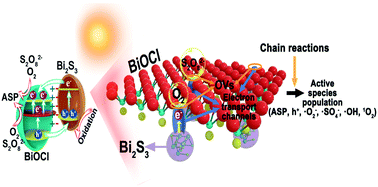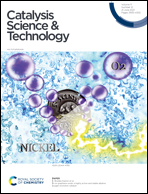Modulating formation rates of active species population by optimizing electron transport channels for boosting the photocatalytic activity of a Bi2S3/BiO1−xCl heterojunction†
Abstract
Sodium persulfate (PS) is a promising oxidant in advanced oxidation processes (AOPs); however, its uncontrollable decomposition limits its application. Herein, a Bi2S3/BiO1−xCl heterojunction with appropriate oxygen vacancies (OVs) was synthesized via a microwave-assisted method, which can efficiently regulate PS to produce an active species population (ASP; h+, ˙O2−, ˙SO4−, ˙OH and 1O2) through optimizing electron transport channels (ETCs). In addition, the ASP formation rates can be modulated by the cooperation of OVs with the interfacial electric field (IEF) in the heterostructure, thus dramatically hindering the invalid consumption of the ASP and significantly enhancing the catalytic efficiency. Simultaneously, the adsorption energy and adsorption configuration of PS on the heterostructure were obtained by theoretical calculation. A reasonable mechanism was proposed through trapping experiments and ESR techniques. This work not only provides a new avenue to activate PS through defect engineering but also offers a novel idea to modulate the ASP formation rates for boosting the photocatalytic performance through optimizing ETCs and interfacial engineering.



 Please wait while we load your content...
Please wait while we load your content...